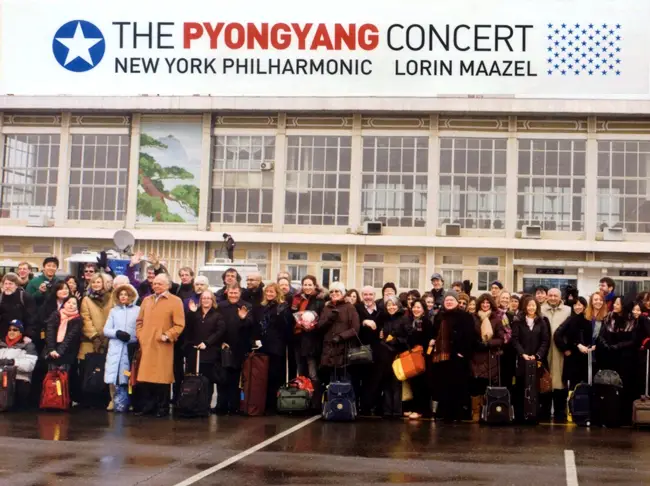
On February 26, 2008, the New York Philharmonic, under the direction of Lorin Maazel, performed in North Korea. The 400-some Americans who traveled to Pyongyang, the North Korean capital (musicians, orchestra staff, 80 journalists and orchestra patrons who paid $100,000 a couple), was the largest group of Americans to visit the north since 1953, when the Korean War ended.
It was a poignant trip in many ways, not least for the fact that none at the time was under any illusion that it would do much to thaw relations with the most reclusive, and dangerous nations on the planet, and one of its most repressive, and certainly its most drab. There is no innovation in North Korea except for new shades of gray. Music helped open China in the 1970s (of course it did: the Philadelphia Orchestra played Samuel Barber’s “Adagio,” which can turn uranium into rose water). It helped open the Soviet Union. It has on rare occasions built a few, shaky bridges between Palestinians and Israelis. But as Condoleezza Rice, the secretary of state for the waning days of the Bush administration at the time, said, “I don’t think we should get carried away with what listening to Dvorak is going to do in North Korea.”
Dvorak’s rousing “New World Symphony,” written in 1893 during the composer’s visit to the United States, as a celebration of the New World, was one of Maazel’s choices. The others were more tame, more diplomatic, less subversive (Gershwin, Wagner), and one was a pure, moving gift to the audience: “Arirang,” the Korean folksong, a wonderful, wonderfully lyrical piece that builds and breaks and builds again in sounds alternately pastoral and oddly western (in the sense of the western movie sound, not western civilization: maybe it’s the sound of the frontier).
The orchestra also played the American and the North Korean national anthems. Both are beautiful.
As the playing of a national anthem goes, it’s difficult to get it right. For one, the national anthem–in the United States, anyway–has been devalued. It is played, overplayed and replayed in so many public venues that it’s become the audible version of those patriotic pins every politician wears out of fear of being mistaken for someone who doesn’t wear his allegiance on his lapel. In big sports events particularly, pop stars have taken to using the anthem to out-octave each other and worse. There’s some damnable ululating going on with these performances, the sort of ululations best left to Arab funerals, not American anthems.
And yet it’s difficult not to be stirred by the Star Spangled Banner anyway. It transcends even the most contrived renditions, because it doesn’t only stir the heart. It stirs memory, too: memory of the anthem at its simple best (we’ve all heard it, we all know its power), and certainly memory of (and belief in) what the anthem stands for. It can only be cheapened so far.
In North Korea that February, the New York Philharmonic, which would have trouble getting anything wrong under Maazel, got the anthem right to a degree that, like its interpretation of “Arirang,” breaks every heart open to hearing it. I don’t know if it’s the circumstances, the no-exit nature of the performance, which really didn’t achieve much of anything beyond its own music, or just the fact that there was something extraordinary about the concert, and about hearing the anthem in the East Pyongyang Grand Theater in North Korea.
Here’s the performance. It’s as great a commemoration of July 4th as any. And below it, watch the Philharmonic’s interpretation or “Arirang,” too. It’s worth every note.
–Pierre Tristam
![]()





























Leave a Reply